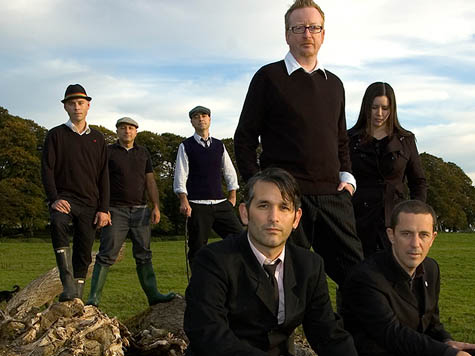By the Young Dubliners
On “With All Due Respect, The Irish Sessions”
Formed in Los Angeles in 2002, The Young Dubliners are a raucous band that blends rock with Celtic roots. From crazy guitar solos to boisterous bagpipe solos, the Young Dubliners have it in their music. The Young Dubliners are so good at what they do that many fans requested they put together an album containing the best of Celtic folk music. In 2007, in conjunction with 429 Records, they released the album “With All Due Respect, The Irish Sessions”. The album features what band front man Keith Roberts describes as “the best of the best” in regard to Celtic folk music. One of the most popular songs on the album is The Foggy Dew, a ballad about the Easter Day Rising of 1916 in Ireland. The song was written by Canon Charles O’Neill, a parish priest of Newcastle, County Down, in 1919. This amazing ballad is a cohesive narrative, using haunting lyrics and a wide variety of musical instruments to produce a masterful piece of music.
The narrative beings very much in the same manner that a story in a book would begin: by announcing the setting. “Twas down the glen one Easter morning, to a city fair rode I” refers to Dublin. The Easter Rising primarily took place in Dublin. The “Angelus Bell o’er the Liffy swell rang out in the foggy dew” refers to a church bell ringing out near the River Liffy, most likely an alarm system to signal that the British were approaching, similar to the lantern hung in the Old North Church in 1775. The next verse continues several allusions to prior battles and battlegrounds, such as “Suvla or Sud El Bar”. It also contains a reference to “Brittania’s huns with their great big guns”. Irish weaponry was inferior when compared to that weaponry of the British. The third verse also contains several allusions to battlefields and battles. It continues the story by explaining how Britain deceived the Irish, claiming that “small nations might be free”; “But their lonely waves But their lonely graves are by Sulva's waves or the shore of the Great North Sea” demonstrates Britain’s deceit. “Had they died, by PeaseS side” is an allusion to Patrick Pearese, an Irish schoolteacher who led the uprising. Once again the reference to the foggy dew is made with the line “Through the shroud of the foggy dew”. The foggy dew is a metaphor, comparing foggy, damp Irish weather to the apprehension and uncertainty that ran wild throughout the Irish populace. The final verse explains how the “Requiem bell rang mournfully and clear” in remembrance of the fallen soldiers. “And the world did gaze with deep amaze, at the fearless men but few” explains how the Irish rebellion sort of opened the eyes of the world; so few Irish stood at all odds against the British. The song concludes with “who bore the fight that freedom's light might shine through the foggy dew”, a metaphor saying that those who survived the fight bore a “light”, or brought hope to the Irish peoples, and said “light” shined through “the foggy dew”, or shed light upon the people’s apprehension.
All the aforementioned elements add to the intricacy and distinctiveness of the song. The strong, central narrative is supplemented by exceptional use of imagery, metaphors, and similes. O’neill succeeded in creating a high-quality, exemplary folk song that was, and most likely will be, remembered for a long, long time.



0 comments:
Post a Comment